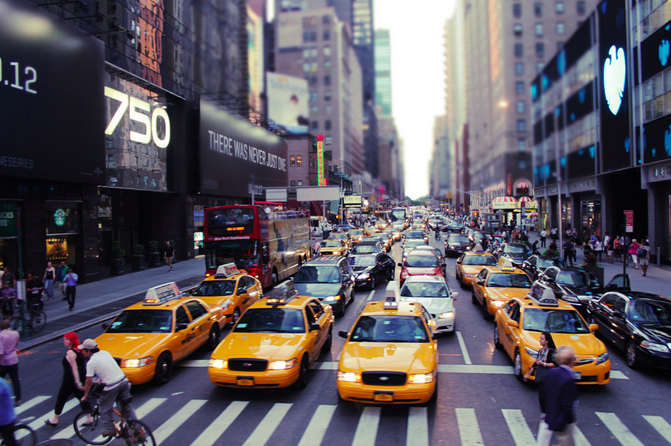Bruce Schaller, an expert on urban transportation, has published an informative and insightful report on the impact in New York City of what he calls ‘Transportation Network Companies’ (TNCs) such as Uber and Lyft. Use of these providers of app-based ride services has grown rapidly, more than doubling in each of the past four years. This reflects the popularity of the services offered, which reduce anxiety, uncertainty and stress, not least by providing assurance of a vehicle in situations where hailing the traditional yellow cab may be problematic.
The contribution of the TNCs to congestion has been a matter of controversy. The present report confirms a previous study carried out by the NYC authorities which found that worsening congestion was driven primarily by increased freight movement, construction activity, pedestrian volumes and record levels of tourism, all of which put growing demands on the streets’ limited capacity. However, use of TNCs continue to grow, raising the question of their future impact on congestion.
A key question is whether TNC growth is making more efficient use of scarce street space by putting more passengers in each vehicle, as with UberPool which offers low fares for trips shared with others? Or does it add to traffic by diverting people from high capacity services such as rail and bus, for which evidence of a recent decline in ridership is suggestive? The available evidence as a whole is insufficient for a definitive answer, but the report suggests that diversion is likely to be more important, implying that TNC’s add to congestion.
The report is concerned that TNCs are fundamentally undoing the cost incentives to use public transport. NYC taxi fares were traditionally set at about 4.5 times the subway fare to encourage the use of transit (public transport). However, as they cut fares, the TNCs are beginning the erase these disincentives to road vehicle use. These fares do not reflect the costs of time delays arising from congestion, hence there would be a case for some kind of congestion charging.
Assessment
Congestion is self-limiting in that as traffic builds up, for instance from more TNC vehicles, speeds drop, trips take longer, and some road users make alternative decisions, for instance to travel at a less busy time, or to go to a different destination, or to use the subway. So it is not to be expected that growth of TNCs would worsen congestion in already congested parts of NYC. The switch of people from the subway to TNC services would be limited for the same reason.

